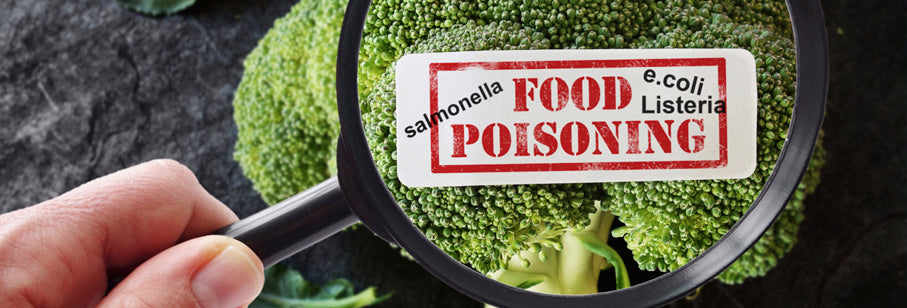borne Illness
Please Let Us Know If You Enjoyed This Article.
Your Feedback Is Important To Us
If you haven’t had “food poisoning”, you’re lucky because it’s absolutely zero fun. Nausea, vomiting, diarrhea and/or fever can all be symptoms. Miserable!
Any type of food, even fresh vegetables, can harbor pathogens. In fact, produce accounts for about half of food-borne illness cases. There are hundreds of food-borne diseases from bacteria, viruses, parasites, and every year an estimated one in six Americans become ill from eating contaminated food. Contamination can occur from spoilage, improper processing, or handling, as well as from contaminants on the food itself. But make no mistake, while food poisoning is nasty, it is also almost completely preventable. Almost.
Most food-borne illness is caused by toxins or microbes (germs) that grow in the intestine and cause illness. Therefore symptoms can show up hours to weeks after eating the offending food, depending on how long it takes for the germs to set up shop and grow enough to cause symptoms. Symptoms such as nausea, vomiting, diarrhea, and fever can be mild or severe. While most cases resolve on their own, more severe cases can cause dehydration and may require medical attention. People with suppressed immune systems or underlying conditions or diseases, elderly, children, and pregnant women may all be more susceptible to food-borne illness as well.
FOOD SAFETY TIPS
By following some simple food safety tips, you can largely prevent the majority of food-borne illnesses.
1. Wash ‘em up:
• Always wash your hands, achieving a good soapy lather, for at least 30 seconds before handling any food.
• Make sure all countertops, cutting boards, and utensils are freshly washed.
• Wash all fruits and vegetables with clean running water (no soap), then dry with a clean paper towel.
• Scrub tougher produce with a brush.
• Inspect for broken skin or peels, cutting away damaged portions and inspecting underneath for discoloration or signs of contamination.
• Don’t rewash bagged veggies that have already been washed, as this could introduce contaminants.
2. Keep Cool:
• Bacteria loves warmer temperatures (anywhere between 40 and 140 F), so don’t let food sit out (non-refrigerated) any longer than necessary.
• If you are barbecuing in the summer heat (80+ degrees) be especially careful not to let food set out for any longer than an hour, at most, as bacteria thrive in these temperatures.
• If you are bringing home leftovers from a restaurant meal, get it in the fridge ASAP to limit bacterial growth.
3. Safe Preparation:
• Keep produce and meats separate to avoid any cross-contamination.
• According to studies, washing meats or poultry does not reduce the risk of food-borne illness, but leaving them out, whether in a bag or not, at room temperature to marinate can increase bacterial growth. Best to marinate in the fridge.
4. Cook Thoroughly:
• Thorough cooking kills germs, but you need a thermometer to make sure internal temperatures in the meat or poultry are achieved. 165 degrees is considered best for poultry, leftovers and ground meat, while fish, pork and beef should be heated to a minimum of 145 degrees to help minimize bacterial presence.
5. Avoid The Biggies:
• Proteins offer great environments for bacterial growth, so avoid raw or undercooked eggs, raw fish and raw dairy products (which is considered high risk). Also make sure yogurts, salad dressings, and sauces are covered, kept cool, and used before spoiling.
Please Let Us Know If You Enjoyed This Article.
Your Feedback Is Important To Us
Disclaimer: This content is for informational purposes only and is not meant as medical advice, nor is it to diagnose or treat any medical condition. Please consult your physician before starting or changing your diet or exercise program. Any use of this information is at the sole discretion and responsibility of the user.








